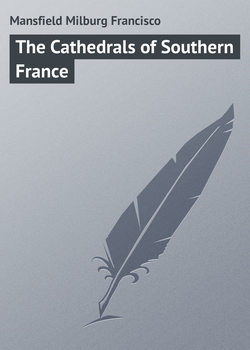Читать книгу The Cathedrals of Southern France - Mansfield Milburg Francisco - Страница 8
PART II
South of the Loire
IV
CATHÉDRALE DE LUÇON
ОглавлениеWhen the see of Luçon was established in the fourteenth century it comprehended a territory over which Poitiers had previously had jurisdiction. A powerful abbey was here in the seventh century, but the first bishop, Pierre de la Veyrie, did not come to the diocese until 1317. The real fame of the diocese, in modern minds, lies in the fact that Cardinal Richelieu was made bishop of Luçon in the seventeenth century (1606 to 1624).
The cathedral at Luçon is a remarkable structure in appearance. A hybrid conglomerate thing, picturesque enough to the untrained eye, but ill-proportioned, weak, effeminate, and base.
Its graceful Gothic spire, crocketed, and of true dwindling dimensions, is superimposed on a tower which looks as though it might have been modelled with a series of children's building-blocks. This in its turn crowns a classical portal and colonnade in most uncanny fashion.
In the first stage of this tower, as it rises above the portal, is what, at a distance, appears to be a diminutive rosace. In reality it is an enormous clock-face, to which one's attention is invariably directed by the native, a species of local admiration which is universal throughout the known world wherever an ungainly clock exists.
The workmanship of the building as a whole is of every century from the twelfth to the seventeenth, with a complete "restoration" in 1853. In the episcopal palace is a cloistered arcade, the remains of a fifteenth-century work.
A rather pleasing situation sets off this pretentious but unworthy cathedral in a manner superior to that which it deserves.
